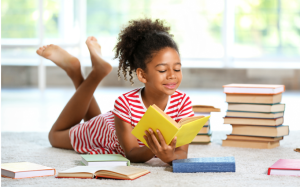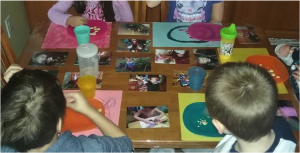This nine-part course (approximately 3 hours and 45 minutes) from the National Child Traumatic Stress Network will teach participants about “early childhood social-emotional development; the impact of stress and trauma; reflect on the possible meanings of children’s behaviors; explore the influence of culture on families’ socialization goals; and become familiar with a number of strategies aimed to promote secure attachment and safe socialization practices.”
Providers will need to sign up for a free account to access this resource.
Adapted from Janet Gonzalez-Mena and Navaz Bhavnagri these questions are helpful for providers to self reflect when struggling with a family’s practice, that is different than their own.
This reading from the Head Start Early Childhood Learning and and Knowledge Center for Cultural and Linguistic Responsiveness revisits the Multicultural Principles handbook from 1991. It provides updated research and information on key points including:
- Culture has an influence on the beliefs and behaviors of everyone.
- Culture is passed from generation to generation.
- Culture is dynamic and changes according to the contemporary environment.
- Home language is a key component of children’s identity formation.
- Successful programs respect and incorporate the cultures of children and families.
The first principle is “Every individual is rooted in culture”. To view all of the updated principles visit ECLKC.
This resource offers tips for choosing culturally responsive books for children and how to check for stereotyping and bias. There is a worksheet included that can be used when evaluating a children’s book and links to other helpful resources. Check out the Head Start National Center on Cultural and Linguistic Responsiveness for more information and resources.
Selecting Culturally Appropriate Books Resource
Using family photos from the children in your care is a great way to connect with families and also include culturally relevant images in your environment. These can be a source of comfort and reassurance for children throughout their day.
Diane Ott, owner of Happy Kids, added photos of children in her care to a table that is used for meals and also other activities throughout the day by placing them under a clear plastic table cover.
Sandy Cole, owner of Sandy’s Kids, has a display of family pictures on a wall near the dramatic play area. The leaves on the trees in the display have the names of all of the children Sandy has cared for over the years.
Where might you include photos of children’s families in your family child care home?
This new blog post from NAEYC raises some important considerations for what developmentally appropriate practice means in different contexts around the world. Stephanie Olmore raises some important questions about differences and similarities in what development means and looks like in different cultures.
Read this story by Patricia Grace that reminds us to be open to different experiences, ideas, and cultures.




